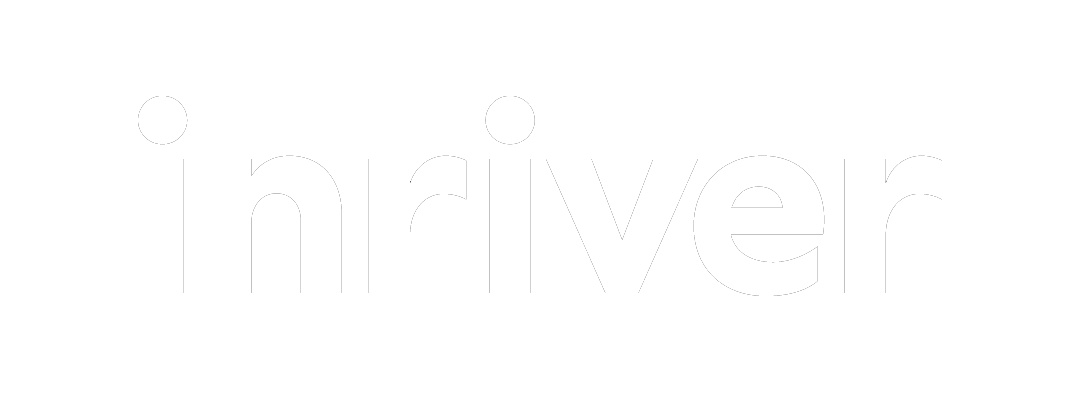Compare E-Commerce models.
Our scoring process is applied and objectively evaluated according to strengths and weaknesses.
Compare vendors based on the five dimensions of the Composable Agility Score. Freely choose the solutions you want to compare to get an easy overview of their capabilities. You can adjust your selection at any time or click on any solution to read a more detailed explanation of their CA Score.
A vendor must first be removed before another one can be added for a comparison.
How easy is it to quickly and scalably build the individual solutions you need for your business using the application? See also: Best of Breed versus Best of Suite.
How well can a cloud application be broken down into its individual parts and used? The best solutions can be combined based on specific customer requirements.
How well can this application be connected and controlled via standardized applications? A functional API interface is able to interact with any other software.
How natively can this application be operated in the cloud (updates, backup, porting)? An ideal cloud solution is available everywhere, accessible at any time, highly secure, flexible and agile.
How independent can the application be from the end user’s interface (desktop, mobile, on the go…)? A functional solution is able to operate with any frontend.




Adobe Commerce was built on Magento and thus has a long history and widespread use in the market. The open-source version of the platform continues to exist under the name Magento 2. The managed enterprise version of Magento is now part of the Adobe Experience Cloud and can be combined with the various Adobe services.
Salesforce offers companies feature-packed solutions with a focus on powerful AI. While they offer a comprehensive e-commerce solution with their Commerce Cloud, they still have some catching up to do when it comes to some of the interfaces. For example, microservices are being introduced, but are not yet ubiquitous.
Spryker offers a fully modular digital commerce platform for B2B and B2C, as well as Enterprise Marketplace capabilities. Spryker was founded in 2014 in Berlin, Germany, and raised over $130 million in a Series C funding, led by Silicon Valley-based TCV in December 2020. According to Gartner®, Spryker is the fastest growing vendor in the 2021 Magic Quadrant™ for Digital Commerce.
Formerly known as Gladson, over the years, Chicago-based Syndigo has bolstered its positioning in the PIM landscape through various acquisitions. These included acquiring Edgenet, Kwikee, and, in one of the more recent incorporations, Riversand, which has equipped Syndigo with even more powerful product data and content management solutions.
Syndigo was a new entrant in the 2021 Forrester Wave. Syndigo operates globally and serves more than 1,750 retailers and distributors along with over 12,000 manufacturers. Their clients operate in a wide variety of markets, including health and beauty, automtovie, apparel, groceries, and home improvements.
Syndigo was a new entrant in the 2021 Forrester Wave. Syndigo operates globally and serves more than 1,750 retailers and distributors along with over 12,000 manufacturers. Their clients operate in a wide variety of markets, including health and beauty, automtovie, apparel, groceries, and home improvements.
5.1
5.8Composability
6.1Head-
less
less
5.6Cloud
Native
Native
4.9API
3.3Modu-
larity
larity
6.1
5.8Composability
6.5Head-
less
less
7Cloud
Native
Native
7.3API
3.9Modu-
larity
larity
8.6
9.1Composability
8.7Head-
less
less
8.7Cloud
Native
Native
8.9API
7.7Modu-
larity
larity
7.5
7.5Composability
6.5Head-
less
less
9.8Cloud
Native
Native
5.3API
8.4Modu-
larity
larity
Modularity
3.3
3.9
7.7
8.4
The architecture of Adobe Commerce is not based on a modular system/microservices. It is a historically grown monolith. Users implement more or less all existing functionalities, no matter whether they really need them, and it’s difficult to add new custom functionality. Only a few services like the analytics capability called Business Intelligence can be added at an extra cost.
The Salesforce Solution is not based on a modular system/microservices. It’s a monolith that is making an effort to modernize its offerings—which doesn’t change the origins and nature of its core architecture.
Spryker’s architecture is based on a modular system/microservices, even though the products they offer focus on capabilities which are essentially bundles of microservices. Based on Gartner’s Packaged Business Capability (PBC) paradigm, this approach results in a less granular segmentation than microservices would offer, but reduces complexity and makes the deployment simpler. Services can be deployed independently and customized if needed.
Syndigo’s acquisitions over past years have added to their microservices capabilities. Specifically, Syndigo’s acquisition of Riversand has assisted in Syndigo customers accessing microservices. In this way, Syndigo is approaching Mciroservices in a stable manner, similar to other vendors in the PIM landscape.
API
4.9
7.3
8.9
5.3
Adobe Commerce generally offers the Magento web API framework, but it does not follow an API first approach. Magento built an online shop system with inseparable GUI, and the API layer was added later, which is inevitably represented in the architecture. Technically, these APIs follow most, but not all, modern industry standards.
With Salesforce, pre-configured API connections to 3rd party apps (e.g. ERP systems, inventory systems, accounting systems etc.) are not available. Due to their acquisition of the API platform Mulesoft and their very own tech infrastructure, Salesforce offers several APIs. Most are REST standard.
Spryker is an API first solution with an exceptionally high coverage of functions via APIs. The Spryker “GLUE API” adheres to all modern quality and security standards, and supports versioning as well as different output types. High-code customizations and low-code configuration are available.
Syndigo’s API connections have improved greatly in recent years, with the vendor offering various exposed RESTful APIs which enable efficient connections and data management. Syndigo’s APIs utilize HTTPs requests, JSON structure, and queries using Postman application.
Cloud Native
5.6
7
8.7
9.8
Adobe or Magento Commerce can be deployed as an on-premise solution, or in the cloud on AWS or Azure. By partnering with major cloud providers, Adobe Commerce Cloud is, overall, a robust solution. The greatest drawbacks are the missing support for autoscaling, and inconvenient core updates.
Salesforce offers a cloud-native solution. It mainly uses AWS and offers a very solid infrastructure. Updates can be done seamlessly for end-users, although there can be issues with elasticity, e.g. scalability.
Spryker started as a purely on-premise solution, but shifted entirely to a cloud-native approach. The Spryker Cloud Commerce OS is a platform-as-a-service (PaaS) solution mainly deployed on AWS, but Azure and Google Cloud Platform are possible as well. Updates are automated for continuous deployment.
As a multi-platform SaaS solution, Syndigo offers excellent cloud native capabilities. Their cloud native offering has expanded in recent years to include further capabilities via cloud, partly due to partnerships with companies such as Predica, Nexer, and Riversand.
Composability
5.8
5.8
9.1
7.5
Adobe or Magento Commerce is a monolithic platform that is deployed with all the features included, not just the ones required. It is not possible to decompose included features. The main possibilities for extension and customization are through third-party integrations from the large Adobe ecosystem, or through custom solutions, which are inevitably high-code developments requiring considerable resources.
For functionality beyond standard integrations, additional coding is required. All customizations must be done in collaboration with existing features e.g. those delivered by salesforce.
The Spryker Cloud Commerce OS is a modular system following the best of breed approach with a decent-sized and rapidly growing ecosystem of partners. On a business level, Spryker’s App Composition Platform is particularly powerful, enabling one-click integration of technology partners. On a technical level, Spryker provides a considerable number of Software Development Kits (SDK) as building blocks to simplify the development of new integrations, as well as high-, low- and no-code customizations.
Syndigo offers a strong ecosystem and various software partners. This has been corroborated in various reports from analyst groups such as Forrester. However Syndigo would benefit from partnering with a broader set of retailers and building out more “close the loop” analytics. Syndigo is still catching up to peers in areas such as governance and support and integrations.
Syndigo customer’s can utilize its integrated Content Experience Hub, which allows them to publish sydicate, manages, and audit content across the world’s largest trading network of brands and recipients.
Headless
6.1
6.5
8.7
6.5
In the architecture of Adobe Commerce, the business logic is not decoupled from the frontend. This means that it is not a true headless solution, but rather a hybrid. Still, many out-of-the-box skins and strong personalization options are available. But it is not possible to develop the user experience freely and flexibly.
Salesforce is not headless; backend and frontend are not decoupled. Therefore, it allows you to work with a page designer solution, which is designed to give merchants more control over templates and content. It comes with a powerful AI-powered personalization feature and, thanks to the acquisition of the PWA service Mobify, it also delivers an out-of-the-box PWA platform. Salesforce does expose APIs and offers a headless CMS, but that didn’t change the underlying architecture of the core platform. It is still not microservice-based.
Spryker is a truly headless solution and optimized to be used in multi- and omnichannel setups. It provides a strong out-of-the-box frontend that lacks some personalization capabilities in Spryker’s own CMS, but the flexibility in terms of customizations and third party integrations is very high.
Syndigo offers headless integrations, but only through third-party partnerships, including commerce platforms such as Spryker.
Bottomline
5.1
6.1
8.6
7.5
Based on Magento, Adobe Commerce remains a monolith that was not developed natively with the standards of modern e-commerce. It is a solid and industry-recognized e-commerce solution, benefitting from the community and large ecosystem. The original system was extended with an extensive API layer and changeable frontends. However, Adobe Commerce is not truly headless or API-first, and customizations require significant effort and maintenance.
Salesforce offers a robust solution with some unique functionality like powerful AI. Due to the many acquisitions, it feels a bit patched together — they mean that ecommerce is not Salesforce’s main area of focus. Salesforce is known as a global company and benefits from other Salesforce acquisitions and products. As one of the largest known monoliths, Salesforce is trying to modernize step by step especially with regards to microservices.
Spryker is a leader in the Cloud Agility Score with a special focus on composability via its App Composition Platform and the use of Packaged Business Capabilities. The latter feature makes microservices Spryker’s lowest subscore—at an overall very high level. The Spryker Cloud Commerce OS is headless throughout, offers nearly comprehensive high-quality API coverage, and is deployed natively on leading cloud hosting providers.
Syndigo’s acquisition of various companies and providers has, over the years, expanded their offering. They score particularly well in terms of being cloud native. Other benchmark criteria, such as offering microservices, have improved over time. Some of their more recent acquisitions may improve their services further.
FAQ
Is Adobe commerce the same as Magento?
Adobe Commerce is based on Magento, but it is not the same product. Magento is an open-source commerce solution released in 2008. 10 years later, Adobe acquired Magento, and it ultimately became Adobe Commerce. However, the open-source version of the platform continues to exist under the name Magento 2.
What is Adobe Magento?
Magento is an open-source e-commerce platform written in PHP. Magento was acquired by Adobe Inc in May 2018 for $1.68 billion. The software was originally developed by Varien Inc., a US private company headquartered in Culver City, California, with assistance from volunteers.
What is the difference between Adobe Magento and WordPress?
Magento is a highly extensible open-source e-commerce platform designed to help users with at least a basic level of web development knowledge build and grow an online store. WordPress is a multi-purpose content management system that appeals to users with varying levels of technical knowledge
What are Adobe Magento extensions?
Extensions are add-on software modules designed to enhance user experience and increase conversions. The standard Magento platform is somewhat basic, allowing it to work for a range of e-commerce businesses. As a business grows, extensions can be added or removed to allow for prime functionality.
Is Adobe Magento free?
Magento Open Source is free of charge. You can also use various free extensions and themes provided by Magento extension builders to enhance your site. However, launching an online business goes beyond downloading and installing the platform. You have to pay for domain and hosting services. Adobe Commerce does not offer a free version.
What is Salesforce?
Salesforce is a cloud computing software as a service (SaaS) company that specializes in customer relationship management (CRM). The software has become the number one for customer success and helps businesses track customer activity, market to customers and many more services.
What does Salesforce do/offer?
Salesforce lets you efficiently unify different principal functions of your business so you can achieve customer success. You can sell, provide service, market, collaborate, know your customers, and build apps on a single platform.
How does Salesforce architecture work?
Salesforce has a multilayer architecture; it contains a series of layers situated on top of each other. In the multilayer Salesforce architecture, the users are at the topmost layer.
Does Salesforce store data in a cloud?
Salesforce is a cloud platform and hence all the data stored in Salesforce is stored in cloud. Like Google, AWS and Microsoft, Salesforce has multiple data centers across the globe where this data is actually stored. All of these data is stored at multiple locations for easy accessibility and backup purpose which means that each record that is created in Salesforce is stored at muliple data centers across the globe.
Is Salesforce free?
Salesforce does not offer a free version of their software, so users have to choose between the different pricing plans.
What is Spryker?
Spryker is a commerce platform with a full suite of e-commerce tools which enables companies to create sophisticated, transactional business models in B2B, Enterprise Marketplaces, Unified Commerce and B2C.
What does Spryker do/offer?
The Spryker Cloud Commerce OS is a composable platform-as-a-service (PaaS) solution with headless & API-based architecture. Enterprises from all industries can use Spryker to innovate and differentiate their digital commerce business.
Is Spryker headless?
Spryker ‘s architecture is headless, the business logic and backend are decoupled from the customer-facing frontend. Spryker enables headless commerce solutions and is optimized to be used in multi- and omnichannel setups.
What is Spryker Marketplace?
Spryker’s commerce platform provides B2B, B2C, D2C, and Marketplace capabilities in one stack. That means that Spryker customers can build their own marketplaces in the Spryker Cloud Commerce OS.
Is Spryker free?
Spryker is no open source solution and does not offer the option of a free trial.








